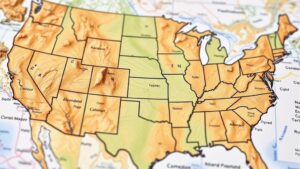Leveraging Geological Surveys to Locate Valuable Rock and Fossil Sites
Leveraging Geological Surveys to Locate Valuable Rock and Fossil Sites
The systematic study of geological surveys has played a pivotal role in the discovery and conservation of valuable rock and fossil sites. This research article aims to elucidate the methodologies employed in geological surveys, the significance of these findings, and the implications for both scientific inquiry and economic development.
Understanding Geological Surveys
Geological surveys are comprehensive assessments of the Earths materials, structures, and processes. These studies involve various techniques such as mapping, sampling, and geophysical imaging to understand geological formations. United States Geological Survey (USGS) defines geological surveys as “detailed investigations of rocks, minerals, and fossils to assess their distribution and characteristics.â€
Importance of Geological Surveys
Geological surveys are essential for several reasons:
- Resource identification: Surveys help locate mineral deposits, fossil fuels, and rare earth elements.
- Archeological insights: Fossils are crucial for understanding past life forms and environmental conditions.
- Environmental assessments: Surveys aid in the evaluation of geological hazards and environmental protection.
Methodologies Involved in Geological Surveys
Geological surveys employ a variety of methodologies that can be categorized into traditional and modern approaches.
Traditional Methods
Traditional geological survey methods encompass:
- Field Mapping: Geologists conduct extensive fieldwork to map out rock formations and collect samples. For example, the Geological Society of America often utilizes field mapping in remote areas like the Rockies to locate significant fossil sites.
- Rock Sampling: This involves collecting rock specimens from various locations for laboratory analysis. Historical data from sites like the Burgess Shale in Canada highlight the success of sampling methods in identifying significant fossilized remains.
Modern Techniques
Recent advancements in technology have enhanced the accuracy and efficiency of geological surveys:
- Geophysical Surveys: Techniques such as magnetic resonance imaging (MRI), ground-penetrating radar (GPR), and seismic reflection have become common. For example, a 2019 survey in the Appalachian Mountains utilized GPR to locate previously hidden fossil beds.
- Remote Sensing: Satellites and drones provide high-resolution imagery to identify geological features from a distance. The integration of Geographic Information Systems (GIS) has revolutionized the way geological data is analyzed and visualized.
Case Studies
The practical application of geological surveys can be illustrated through several notable case studies:
1. The Morrison Formation, USA
The Morrison Formation, famous for its dinosaur fossils, was studied extensively through geological surveys, revealing rich deposits in states such as Colorado and Utah. Data from the USGS indicated that this formation harbors specimens dating back to the Late Jurassic period, greatly enhancing our understanding of dinosaur evolution.
2. The Solnhofen Limestone, Germany
This site, which has provided exquisitely preserved fossils including the Archaeopteryx, was discovered through meticulous geological surveying techniques. Research has shown that the advanced mapping methods utilized in the early 19th century led to the identification of significant paleontological resources.
Challenges and Considerations
Despite the advancements in geological survey techniques, various challenges persist:
- Funding Constraints: Many geological surveying projects rely heavily on government and private funding, which can fluctuate based on economic conditions.
- Environmental Impact: Increased surveying activities may lead to habitat destruction, necessitating a balanced approach between research and environmental conservation.
Future Directions
Looking ahead, the integration of artificial intelligence (AI) and machine learning in geological surveys holds promise for enhancing predictive modeling and data analysis. For example, AI algorithms can process extensive datasets from geological surveys to predict the likelihood of finding valuable deposits.
Conclusion
To wrap up, geological surveys serve as a vital tool for locating valuable rock and fossil sites, contributing significantly to the fields of geology, paleontology, and resource management. As technology continues to evolve, so too will the methodologies and efficacy of these surveys, paving the way for new discoveries that enrich our understanding of Earths history and resources. Stakeholders in academia and industry must collaborate to navigate the challenges ahead, ensuring successful and responsible outcomes from geological investigations.
Actionable Takeaways
- Support and engage with geological survey initiatives in your region to promote better understanding of local resources.
- Explore partnerships with academic institutions to leverage their expertise in geological analysis.
- Advance sustainable practices in geological surveying to mitigate environmental impacts.



